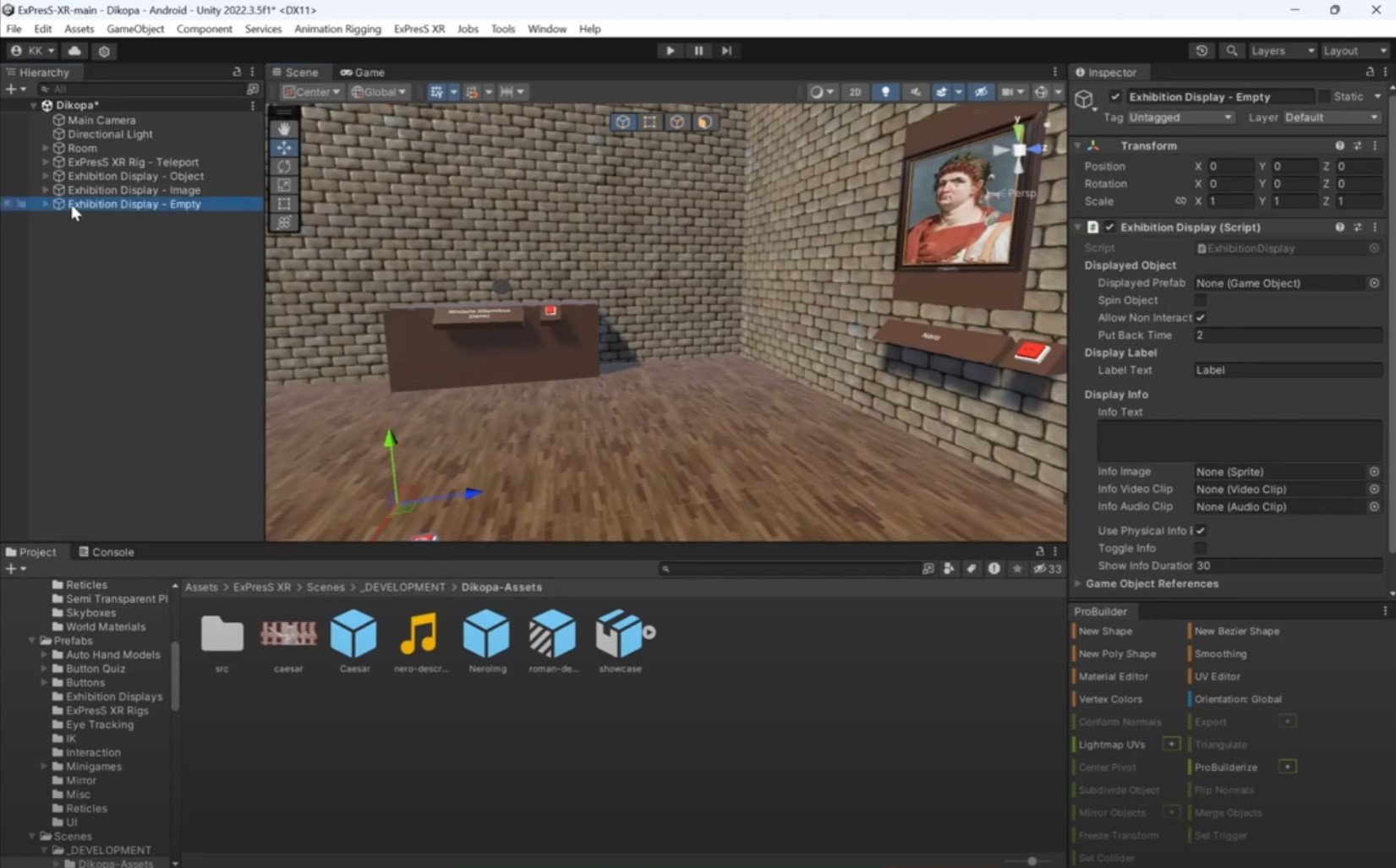Virtual Exhibitions
In a recent presentation by Stefan Krmnicek, Kevin Körner, and Luca Dreiling, I learned about a team of the University of Tübingen (Germany) that developed a Unity plug-in for creating virtual exhibitions. The tool provides assets and options for creating a virtual exhibition very quickly and easily and in the presentation they even showed a live demo.
What are Virtual Exhibitions?
Virtual exhibitions are museums in the virtual world. This can be achieved with different technologies: Virtual Reality, Augmented Reality, but also even a website can be a virtual exhibition. In the case of the ExPresS XR-Project, the system is using Virtual Reality and therefore VR goggles. The reason for virtual exhibitions can be manifold: If a museum closes down, if you want to present a certain collection digitally, if you want to provide access to a collection otherwise not accessible,… There are many reasons for virtual exhibitions.
I think that especially during the Covid pandemic, this topic gained a lot of attention. When people were hindered going into museums, the demand for virtual exhibitions was raising. But I think even now, virtual exhibitions can be of high value providing interactive access to collections or exhibitions, that would otherwise be impossible in real life.
What is the plug-in doing?

The plug-in was created for Unity, a game engine often used in creating games and simulations. The plug-in provides a couple of displays for different kinds of objects. For example, you can create an object display, just put your 3D model inside and create a label, an information text or connect various media files, like video or audio. The plug-in also offers the possibility to create small games and quizzes that gamify the virtual museum experience.
The functionality of the plug-in is very well described on their English Wiki pages. But looking at the demonstration above, it seems pretty easy and intuitive to use. I can imagine very well integrating this into a university course to create various exhibitions about various topics in archaeology.
Where will we go from here?
That is a good question. In the talk, the developers said that they think about moving away from Unity to an open-source alternative. I also think that VR shouldn’t be the only solution, as not many people own such a device. Knowing a bit about Unity myself, I also know that it should be relatively easy to also export a 3D video game-style experience, which everyone – even with a tablet – could use.
Be that as it may, I think the ExPresS XR plug-in is a wonderful addition to the toolbox of each archaeologist or historian concerned with visually expressing their results in a modern way. It is not easy to create a real-life exhibition and impossible for the most. But considering the raising digitisation of material culture, many people can create their own exhibitions very easily with this tool. I am excited how this will develop in the coming years.







